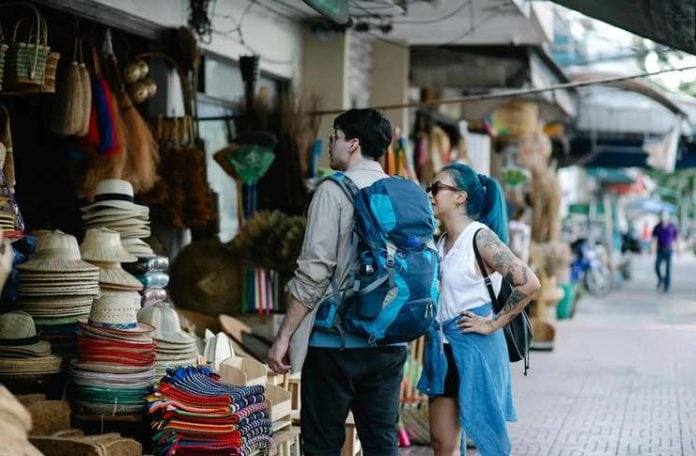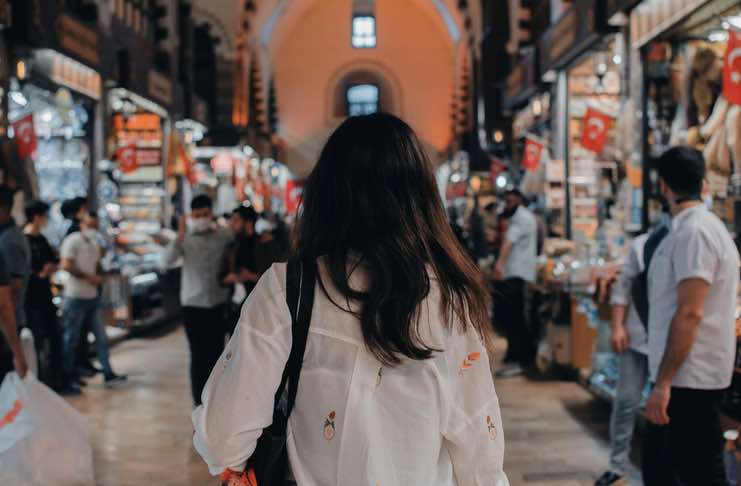
Travel souvenirs are fascinating little things. Some people collect them like tiny, tangible stamps of memory; others, like me, try to find pieces that tell a story—those that look and feel like they carry the soul of the place they’re from. The thrill is in tracking down items made by locals, something that connects the maker and the buyer in this small, meaningful way. But it’s no easy feat. Sometimes, the hunt for authentic, handmade treasures feels like panning for gold in a river of keychains and shot glasses. In this post, as part of our travel gifts section, we’ll delve into how to find authentic handmade goods on your travel adventures.
Now, why hunt for handmade goods instead of just grabbing the first trinket you see? Well, there’s something magical about holding an item that someone poured their time, energy, and creativity into. It’s like each handmade item has a pulse. By choosing handmade, you’re choosing to support local artisans and keep traditional crafts alive. It’s a vote against the cookie-cutter items that don’t feel like they belong to anywhere or anyone. And let’s be honest—most of those “handmade” items in tourist shops? They’ve seen more factories than a fast-food chain.
Do Your Homework First
Here’s the deal: research goes a long way. Before you even set foot in a foreign market, start digging around for information about what that place is known for. I’m talking about those special crafts that take root in a region and thrive there for centuries. Handmade products like Japanese ceramics, Moroccan leather goods, or Chilean textiles are more than just pretty things—they’re tradition personified. Knowing what each region specializes in adds purpose to your search.
When I was in Kyoto, I spent days visiting small ceramics studios hidden in narrow alleys. It took some time and effort to locate these spots, but the pieces I found—cups and bowls with the slightest imperfections—felt like a conversation with the maker. Had I not done some reading beforehand, I might have missed out on these charming finds entirely. For more about what to get in Kyoto – read this.
Watch this video to get a glimpse of a famous souvenirs street in Kyoto:
Social media, travel forums, and even talking to locals can be lifesavers here. You’d be surprised how many locals have their own hidden gems and favorite shops. Sure, it may feel like you’re going a bit overboard, but that extra digging might just lead you to treasures you’ll cherish for a lifetime.
Spotting the Real Deal: Handmade vs. Mass-Produced
Let’s get real for a second. It’s not always obvious if something is genuinely handmade, especially if you’re at a bustling market with vendors calling out to you from every angle. So how do you spot authentic handmade products? Look closely at the details. Handmade items often have subtle imperfections that add character—like a stitch slightly out of place or a brushstroke that’s uniquely visible. Mass-produced items, on the other hand, have a bit of a plastic, soulless feel. They’re too perfect, too precise, and you get the sense they’ve been churned out like popcorn.
One trick I swear by is asking questions. I’ll strike up a conversation with the vendor or artisan about how they made the piece. Where did they source the materials? What inspired the design? Not only does this help gauge authenticity, but it also deepens the story behind the souvenir. And hey, if the vendor can’t tell you anything about the making of the item, chances are it’s not as “handmade” as they’re advertising.
Where to Find Authentic Souvenirs: The Hunt Is Half the Fun
When it comes to finding genuine, local handmade items, forget the big souvenir stores that are practically planted outside every major tourist attraction. Instead, dive into the little artisan markets. These markets are usually packed with craftspeople showcasing their work—woven baskets, intricate jewelry, hand-carved sculptures, and more. There’s something beautifully raw about these spaces where art feels alive and accessible.

Then there are craft cooperatives. These cooperatives are an absolute gem, as they not only sell handmade goods but also make sure the artisans receive fair compensation. When I visited Oaxaca, Mexico, I discovered a cooperative filled with textiles handwoven by local Zapotec women. Each piece was rich with patterns that had been passed down through generations. The colors, the designs, the story behind each one—it all made these textiles infinitely more special than anything in a generic gift shop.
If you’re traveling this Christmas season to Europe, for example, watch this video:
If you’re feeling adventurous, consider visiting workshops or studios directly. Many places offer tourists the chance to see artisans at work, a rare glimpse into the making of traditional crafts. It’s like walking into an artist’s world, seeing the patience and skill it takes to create each piece. And often, they’ll let you purchase directly from them—a win-win for everyone involved.
Museum shops are another good option, though on the pricier side. I’ve found that they often carry handmade pieces inspired by local history and art, and proceeds go towards funding the museums and preserving the culture. So even if you’re paying a bit more, you know it’s supporting a good cause.
Practical Tips for Taking Your Treasures Home
Traveling with delicate, one-of-a-kind items can be nerve-wracking. I once had the misfortune of watching a beautiful glass ornament shatter because I’d just tossed it into my bag with everything else. If you’re picking up fragile or heavy items, plan ahead. Use clothing to wrap fragile items, or invest in some bubble wrap. Trust me, you don’t want to see your handmade treasures end up in pieces.
For larger items, ask if the shop offers shipping services. I did this with a stunning woven tapestry I found in Peru. It was a bit nerve-racking waiting for it to arrive, but it reached home safely without me having to lug it around.
Final Reflections
When I look at my collection of handmade souvenirs, each piece carries a memory—a market in Morocco, a ceramics studio in Japan, a tapestry cooperative in Peru. They’ve become part of my home, little fragments of the world woven into my everyday life. Sure, these items cost a bit more than the run-of-the-mill trinkets, but they’re infinitely more valuable to me. Each piece holds the stories of the artisans who made them, stories that I get to carry on in my own way.
Hunting for authentic, handmade goods isn’t always easy, but it’s a pursuit filled with discovery, connection, and meaning. And as I see it, if you’re going to bring a piece of the world home, let it be something that feels as alive and unique as the places you’ve explored.









